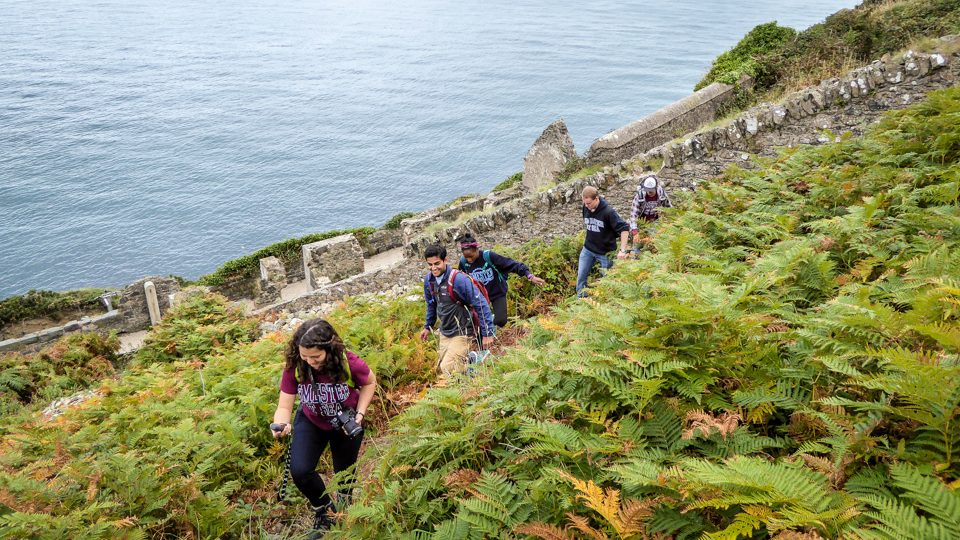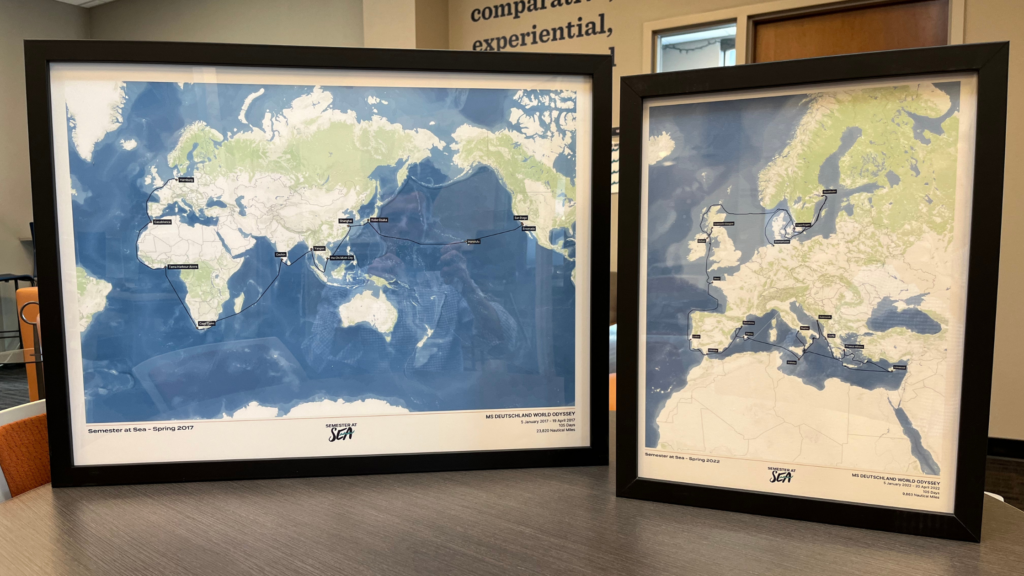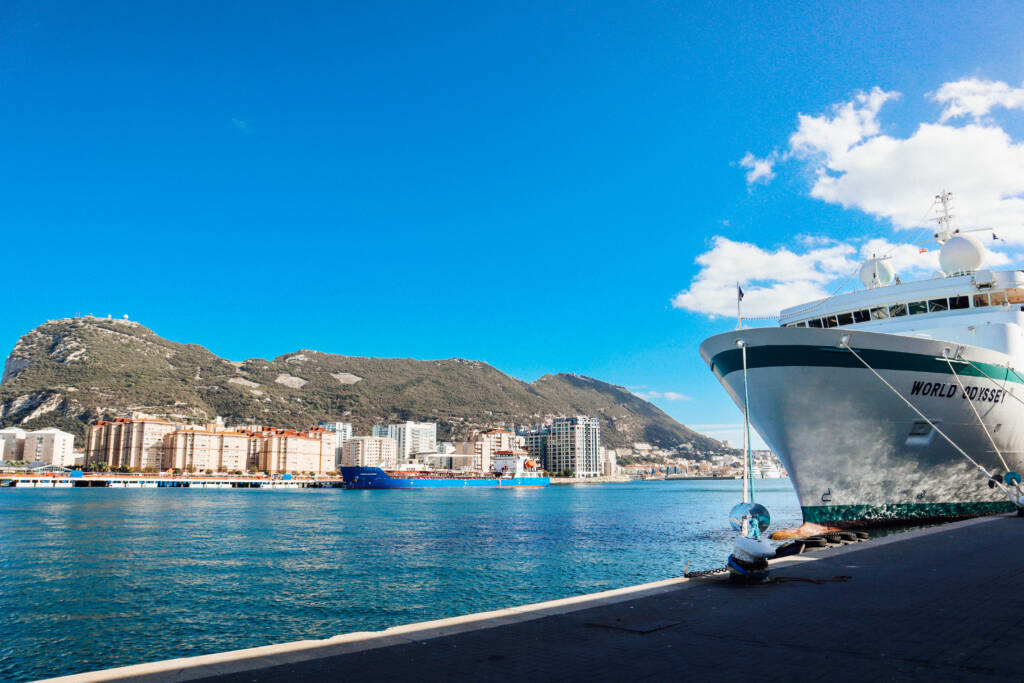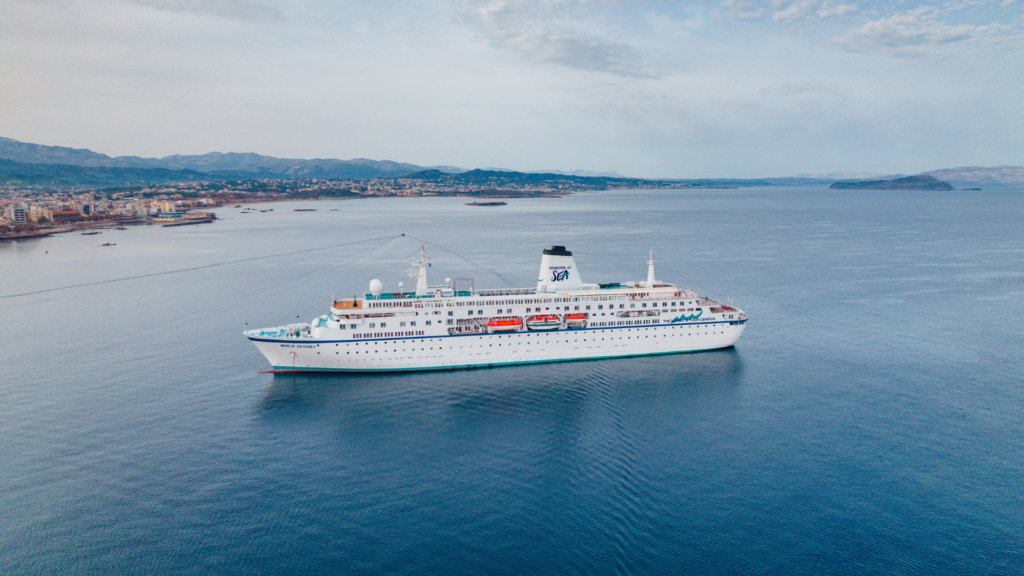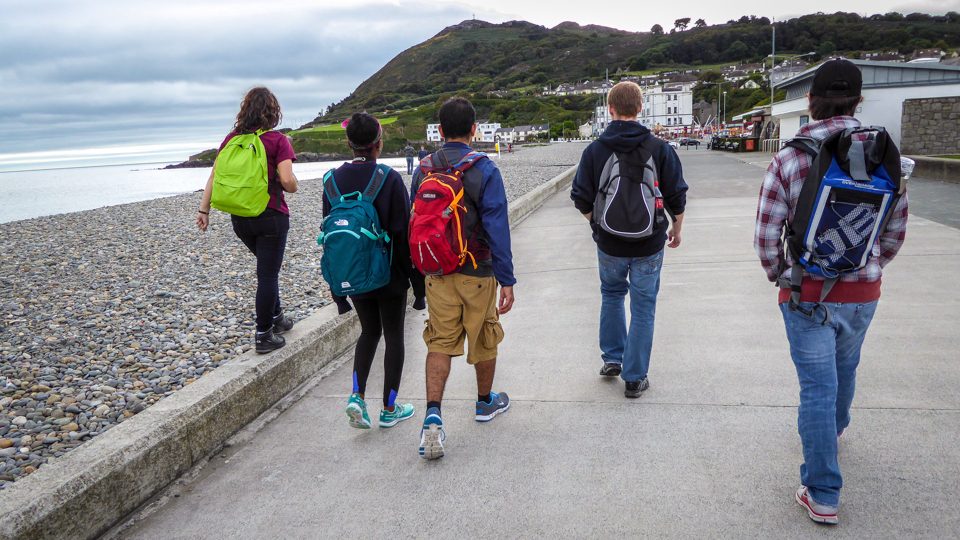
Five students of the Fall 2014 Semester at Sea voyage took time out from exploring Dublin, Ireland to seek hidden treasures in the coastal village of Bray. As members of the Geocaching Club, these adventurers were not using old pirate maps or pursuing leprechaun gold, but rather satellites to locate their prize. Armed with a handheld GPS unit and information from the geocaching website, eight participants set out from the MV Explorer with the goal of finding the first geocache hidden in Europe.
Geocaching is an activity in which participants use the global positioning system to find containers, known as geocaches, hidden by other participants. Contents vary but all physical geocaches contain a logbook for finders to sign their names before leaving the geocache in place for the next geocacher to find. Non-physical geocaches include virtual caches and earthcaches, where participants usually find something of historical or scientific significance and provide answers obtained at the location to prove they were there.
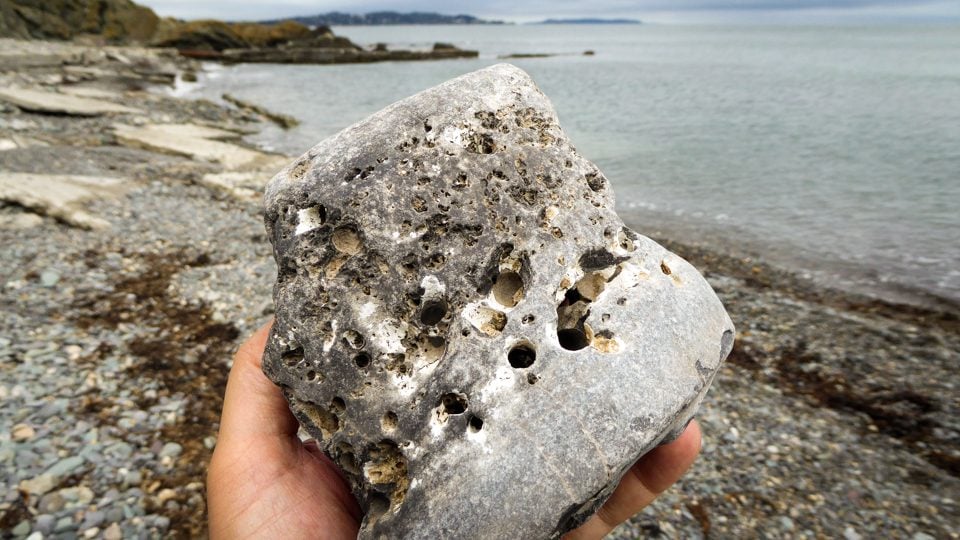
“Geocaching in Bray was an excellent way to see and learn about the unique Irish landscape. The day consisted of climbing on Bray Head for an amazing view, seeing a historic toll gate, observing a swan sanctuary, and gazing out into the sea from the beach. While finding an earthcache, I also learned about the vesicular basalt rock formations in the area and how they have gas bubbles which make holes in them. All of this transformed into my absolute favorite day on my Semester at Sea voyage so far.”
– Bryson Keltner, Western Kentucky University
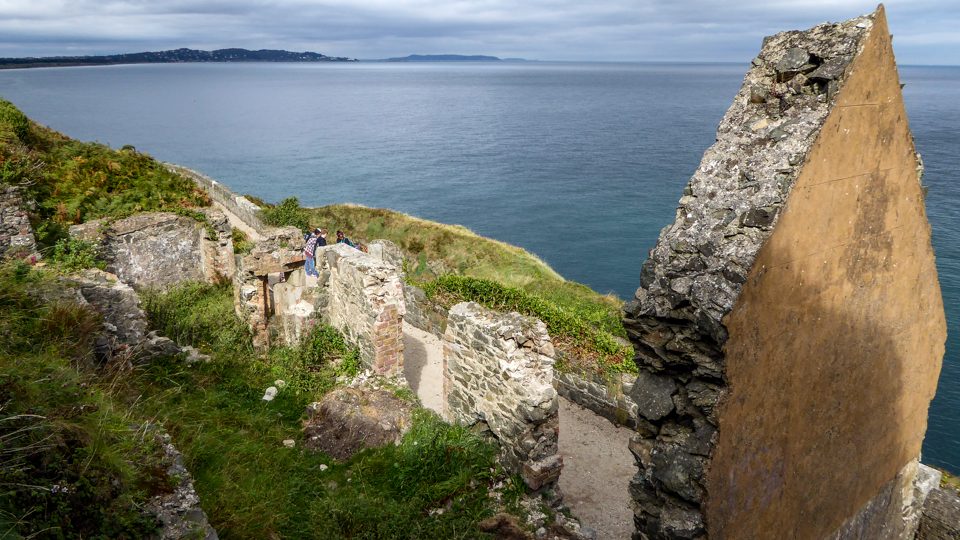
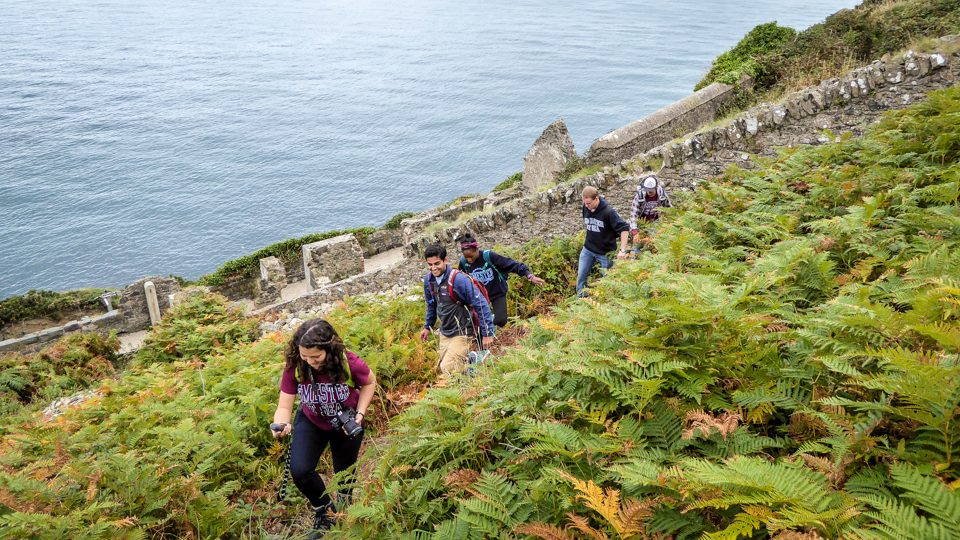
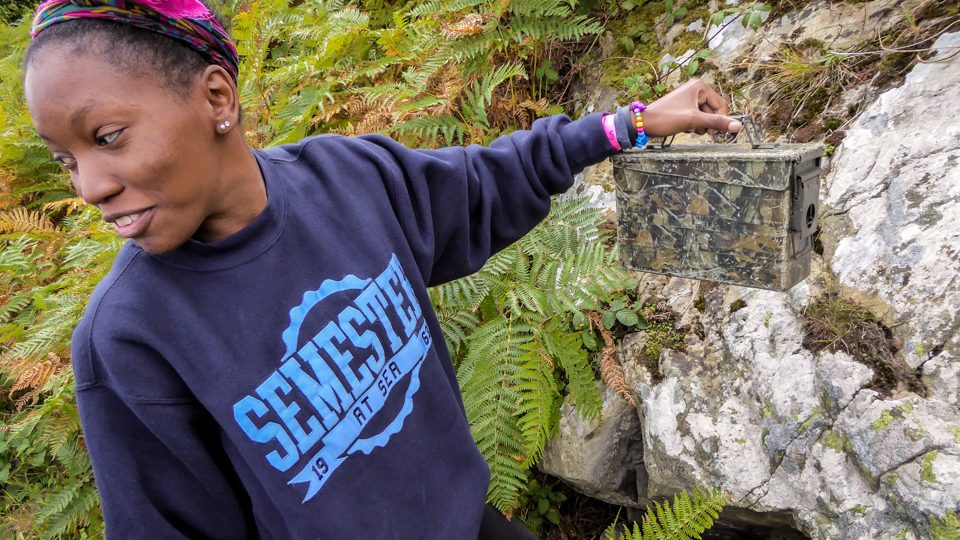
“Geocaching is a really unique way to explore the world. We ended up in a place we wouldn’t have ever visited otherwise. Finding “Europe’s First” was an incredible experience and a lot of fun!”
– Bree Boyd, Acadia University
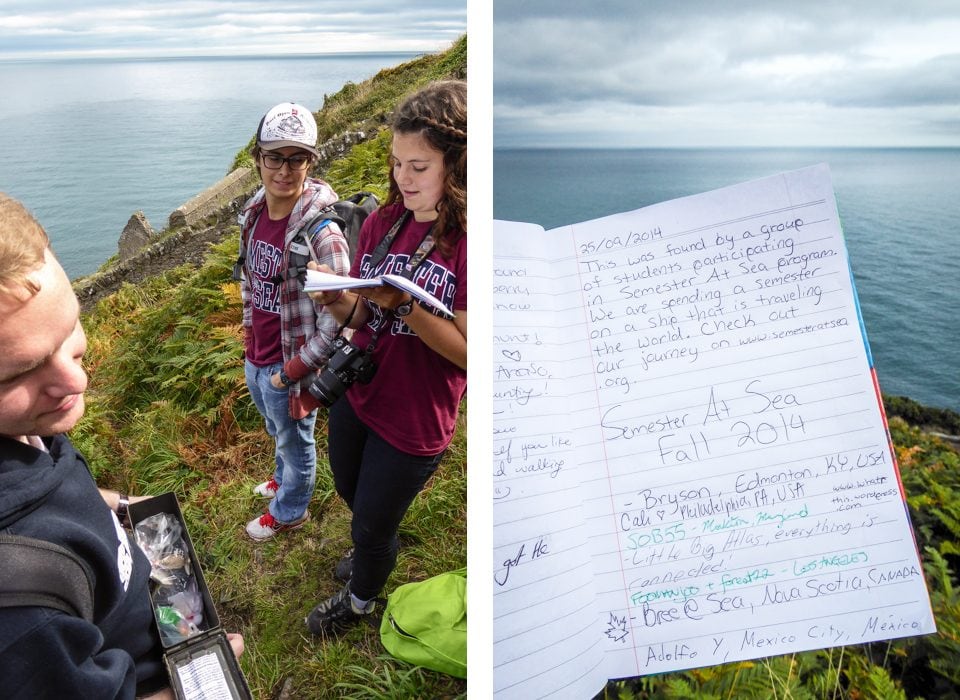
RIGHT: The inscribed message.
“Geocaching gives you the opportunity to discover hidden treasures and solve mysteries that you may ordinarily have been oblivious to. Being able to cache in Ireland proved to be a rewarding experience that took me to majestic locations and taught me about the formation of the landscape.”
– Sarab Kukreja, University of Connecticut
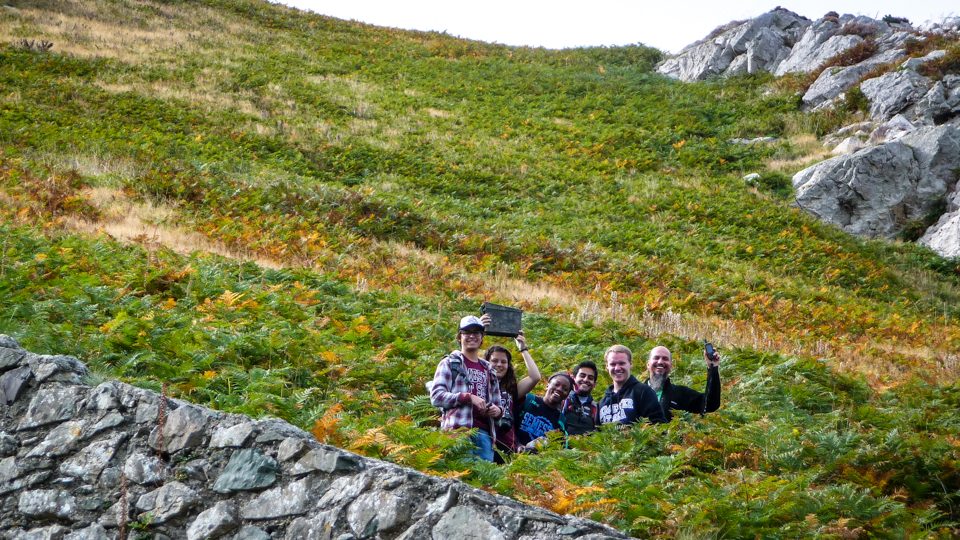
Photo by: Carey Baxter
